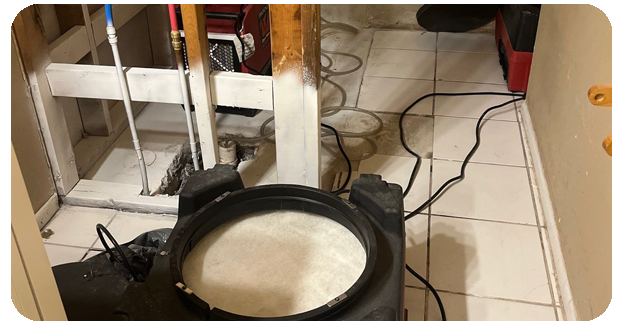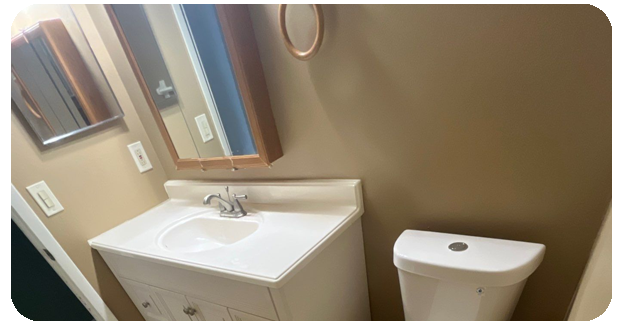
Dealing with flooding in your home can feel overwhelming. The good news is that Home remodeling after water damage gives you a chance to make improvements. Many homeowners don’t realize this difficult situation can become an opportunity. You can transform your living space into something even better than before. Let’s look at some helpful advice for tackling restoration projects when excess moisture has taken its toll.
Assessing Flood and Water Damage Before Home Remodeling
Before starting any home remodeling after water damage, you need to understand what you’re dealing with. First, check if your home is safe to enter. Look for structural problems like sagging drywall or warped fixtures. Take photos of everything for insurance purposes.
Inspect which materials can be saved and which need replacement. Drywall often needs cutting at least 12 inches above the moisture line. Some flooring typically requires complete replacement, while hardwood might be salvageable with proper drying techniques. A thorough assessment helps plan your renovation budget effectively.
Working With Your Insurance Company and Restoration Company
Contact your insurance provider immediately after discovering a burst pipe or flooding. Most policies cover sudden accidents but may not cover gradual leaks. Document everything and keep all receipts from your cleanup efforts.
Professional water damage restoration services can make a huge difference in your recovery process. They have specialized equipment for proper drying. Ask potential restoration companies:
- How many similar projects have they completed?
- Do they coordinate with insurance providers?
- What’s their timeline for completion?
- Do they handle both cleanup and reconstruction?
- Can they provide references from past clients?
Effective Water Damage Repair and Mold Remediation Strategies
Addressing mold growth is essential after moisture problems. Mold starts growing within 24-48 hours, so quick action matters. For larger affected areas, professional remediation becomes necessary.
Complete drying must happen before any home remodeling after water damage begins. Use dehumidifiers to ensure everything is thoroughly dry. Many homeowners skip this crucial step and face problems later. Consider antimicrobial treatments for moisture-prone areas to prevent future issues and protect your family’s health.

Renovation Techniques for Water-Damaged Floors
Flooring often suffers the worst during flooding events. Carpet padding almost always needs replacement, even when the carpet seems fine. For hardwood, sometimes professional restoration techniques can save it if addressed quickly.
When planning your home remodeling after water damage, consider moisture-resistant flooring options. Luxury vinyl, ceramic tile, and sealed concrete work great in flood-prone areas. These materials resist future minor incidents and don’t easily harbor mold. Your restoration company can recommend the best options for your specific situation.
Preventing Future Water Damage After Your Home Remodel
While renovating, take steps to prevent future issues. Install water leak detectors near appliances and under cabinets. Smart systems can even alert your phone when problems occur.
Consider upgrading to fixtures with automatic shutoff features. Improve drainage around your foundation by adjusting landscaping. Replace old plumbing showing signs of wear. These prevention strategies protect your new countertops and cabinetry from future damage, giving you peace of mind after your renovation project is complete.
Home Remodeling After Water Damage Is Your Way To Go
Though challenging, Home remodeling after water damage presents an opportunity to improve your home. You can update outdated cabinets and create a more functional living space while addressing the underlying issues. Many homeowners end up with rooms they enjoy more than before.
Take time planning your project. Consider both practical improvements and design changes. A thoughtful approach to Home remodeling services can transform this difficult situation into a positive change. Your restored home can become more beautiful and functional than ever before.
FAQ
How long does it take for walls to dry after water damage?
Walls typically take 3-5 days to dry after water damage, depending on several factors. The severity of the water damage, type of wall material, humidity levels, and ventilation all affect drying time. Professional restoration companies use specialized equipment like industrial dehumidifiers and air movers to speed up this process significantly.
What not to do after water damage?
Don’t wait to start cleanup – mold growth begins within 24 hours. Never use regular vacuum cleaners on wet areas. Avoid turning on ceiling fixtures if water affected them. Don’t keep wet furniture in place. Never ignore hidden moisture behind walls. Skipping professional assessment can lead to structural problems and health hazards.
How to fix a wall after water damage?
First, remove wet drywall by cutting 12 inches above the water line. Thoroughly dry the wall cavity using fans and dehumidifiers. Apply antimicrobial spray to prevent mold. Install new moisture-resistant drywall, then tape and mud the seams. Prime with stain-blocking primer, then paint. Consider adding waterproof backing in high-risk areas.




